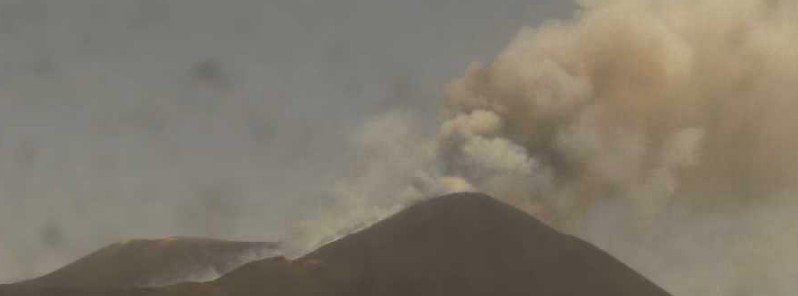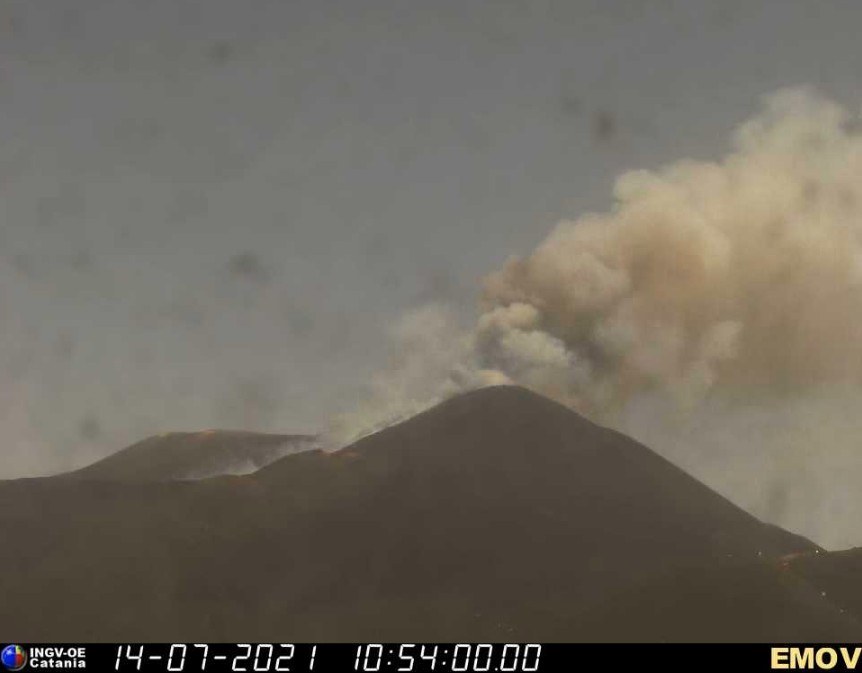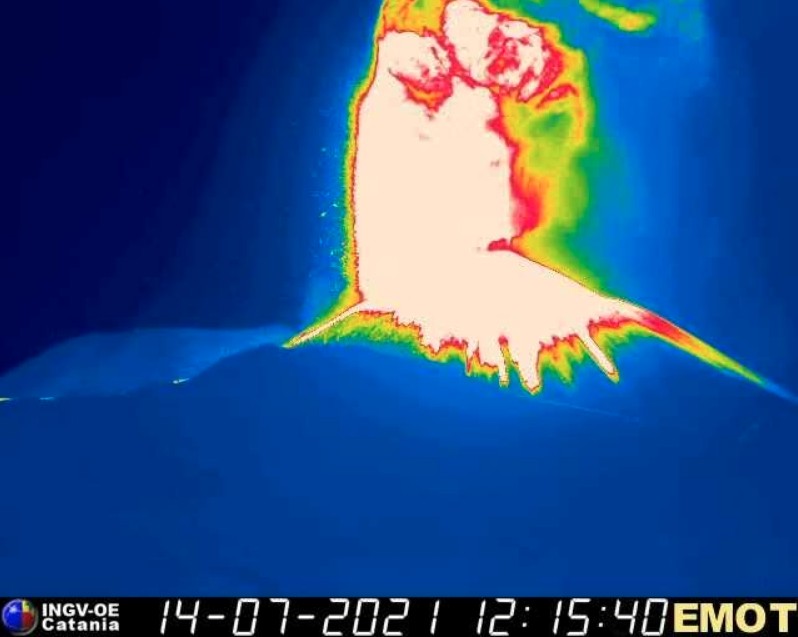Powerful new paroxysm at Etna’s Southeast Crater, Italy

A new powerful paroxysmal eruptive episode (lava fountaining) took place at Etna volcano, Italy on July 14, 2021. The Aviation Color Code was raised to Red at 10:22 UTC. Estimated volcanic cloud height rose to more than 9 km (29 500 feet) above sea level at 11:43 UTC, drifting NE.
Volcanic tremor below the Southeast Crater started increasing around 07:50 UTC, followed by a gradual transition of Strombolian activity to lava fountaining that lasted to 12:30 UTC.
INGV personnel on the field reported the fallout of large bombs on the southern side of the Bocca Nuova Crater.
A powerful new paroxysm occurred at #Etna's Southeast Crater at lunch time on 14 July 2021. Here are some moments during the early phase of the paroxysm, which subsequently became much more violent. pic.twitter.com/w4N5bs6GpS
— Boris Behncke (@etnaboris) July 14, 2021
Abundant fallout of lapilli and ash (up to 1 cm / 0.4 inches and greater) was reported in Rocca Campana. There are reports of volcanic ash and lapilli at Rifugio Citelli and Presa, and volcanic ash in Taormina.
Weak Strombolian activity remained at the Southeast Crater after the paroxysm. In addition, lava flow observed in the SW sector remained fueled as of 12:30 UTC.
Deformations associated with the paroxysmal episode reached a peak at 12:30 UTC.

Image credit: INGV

Image credit: INGV
Geological summary
Mount Etna, towering above Catania, Sicily's second-largest city, has one of the world's longest documented records of historical volcanism, dating back to 1500 BCE.
Historical lava flows of basaltic composition cover much of the surface of this massive volcano, whose edifice is the highest and most voluminous in Italy.
The Mongibello stratovolcano, truncated by several small calderas, was constructed during the late Pleistocene and Holocene over an older shield volcano. The most prominent morphological feature of Etna is the Valle del Bove, a 5 x 10 km (5.1 x 6.2 miles) horseshoe-shaped caldera open to the east.
Two styles of eruptive activity typically occur at Etna. Persistent explosive eruptions, sometimes with minor lava emissions, take place from one or more of the three prominent summit craters, the Central Crater, NE Crater, and SE Crater (the latter formed in 1978).
Flank vents, typically with higher effusion rates, are less frequently active and originate from fissures that open progressively downward from near the summit (usually accompanied by strombolian eruptions at the upper end).
Cinder cones are commonly constructed over the vents of lower-flank lava flows. Lava flows extend to the foot of the volcano on all sides and have reached the sea over a broad area on the SE flank. (GVP)
Featured image credit: INGV

Commenting rules and guidelines
We value the thoughts and opinions of our readers and welcome healthy discussions on our website. In order to maintain a respectful and positive community, we ask that all commenters follow these rules:
We reserve the right to remove any comments that violate these rules. By commenting on our website, you agree to abide by these guidelines. Thank you for helping to create a positive and welcoming environment for all.